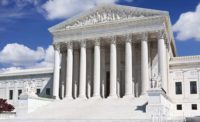The U.S. Supreme Court declined to take up an appeal to a controversial Clean Water Act case that has pitted the County of Los Angeles and the Los Angeles County Flood Control District against the Natural Resources Defense Council and Santa Monica Baykeeper.
The case, initiated by the environmental groups in 2008, already has been before the nation's high court. In January 2013, the court ruled on a narrow question: whether polluted water pumped from one part to another part of the same body of water constitutes a discharge of pollutants under the Clean Water Act. The court decided that it was not but remanded to the 9th U.S. Circuit Court of Appeals the remaining question of whether L.A. County should be held liable for some of the billions of gallons of stormwater flowing into the Los Angeles and San Gabriel rivers from storm drains.
On remand, the circuit court said the pollution in the rivers exceeded what was allowable under the county's National Pollutant Discharge Elimination System permit.
The Supreme Court decision means that the lower court's August 2013 opinion stands, and the case now will go to the district court to determine what the county should do to comply with the terms of its permit and reduce its portion of pollution into the rivers.
The county claimed it should not be held liable for discharges caused by other entities, including municipalities, sewage treatment plants and industries.
Gail Farber, chief engineer of L.A.'s flood-control district and director of the L.A. County Public Works Dept., was disappointed. "This could force municipalities to redirect limited public funds from other critical services to spend on controlling pollution from private and other sources who are the responsible parties," she said in a statement.
But Steve Fleischli, water program director for NRDC, says, "With a trove of 21st-century green infrastructure solutions, the county has no excuse not to ensure this pollution is addressed immediately."





